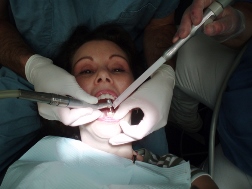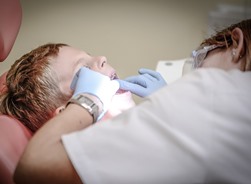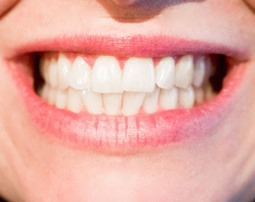How to Select a Dental Hygienist College near Burns Oregon
 Picking the right dental hygienist college near Burns OR is an essential initial step toward beginning your new career in dentistry. But before you can make your choice, you must evaluate and compare your school options. There is far more to doing your due diligence than picking the training with the least expensive tuition or enrolling in the college that is nearest to your residence. There are other crucial factors to consider as well, such as the college’s accreditation and reputation. Dental hygienists generally earn an Associate Degree, as compared to a certificate usually earned by assistants, and can take anywhere from two to three years to finish. Naturally with the lengthier training of a hygienist comes more expense. We will explore all of these considerations and supplemental questions that you need to be asking the dental hygienist colleges you are evaluating later in this article. But first, let’s look at the roles of dental hygienists and the training programs offered.
Picking the right dental hygienist college near Burns OR is an essential initial step toward beginning your new career in dentistry. But before you can make your choice, you must evaluate and compare your school options. There is far more to doing your due diligence than picking the training with the least expensive tuition or enrolling in the college that is nearest to your residence. There are other crucial factors to consider as well, such as the college’s accreditation and reputation. Dental hygienists generally earn an Associate Degree, as compared to a certificate usually earned by assistants, and can take anywhere from two to three years to finish. Naturally with the lengthier training of a hygienist comes more expense. We will explore all of these considerations and supplemental questions that you need to be asking the dental hygienist colleges you are evaluating later in this article. But first, let’s look at the roles of dental hygienists and the training programs offered.
[campusexplorer header_text=”Find Dental Hygienist Schools Near You!” aos=”75346615″ concentration=”2D77CE61″ tracking=”DENTHYG”]
The Function of Dental Hygienists
 When contrasting the job of a dental assistant to that of a hygienist, the biggest difference is undoubtedly that the hygienist works more independently. Dental assistants work with and in support of the Burns OR dentists and the practice. Hygienists, while also assisting the practice, deal with the patients more on a one-to-one basis. They are usually the first person a patient encounters when called from the waiting room. They examine each patient’s gums and teeth and report their findings to the dentists. They also may carry out basic procedures. Based on state law, a hygienist’s duties can include:
When contrasting the job of a dental assistant to that of a hygienist, the biggest difference is undoubtedly that the hygienist works more independently. Dental assistants work with and in support of the Burns OR dentists and the practice. Hygienists, while also assisting the practice, deal with the patients more on a one-to-one basis. They are usually the first person a patient encounters when called from the waiting room. They examine each patient’s gums and teeth and report their findings to the dentists. They also may carry out basic procedures. Based on state law, a hygienist’s duties can include:
- Removing plaque, tartar and stains
- Administering fluoride treatments
- Polishing teeth and applying sealants
- Instructing patients regarding oral hygiene
- Taking and developing X-rays
- Removing sutures and applying fillings
In order to be licensed in nearly all states, dental hygienists must graduate from a Commission on Dental Accreditation (CDA) accredited dental hygiene program. They must also pass the National Board Dental Hygiene Examination in addition to passing any state licensing exams. After they have completed these requirements they are considered fully licensed and may add the “RDH” designation to their names, signifying Registered Dental Hygienist.
Dental Hygienist Training Options
Due to the added responsibility as compared to an assistant, dental hygienists working in Burns OR dental practices are generally required to have an Associate Degree in dental hygiene rather than a certificate. These programs can take anywhere from two to as long as three years to finish and must be accredited by the CDA in virtually every state. They are offered in trade and vocational schools as well as community colleges. And in addition to classroom studies learning the fundamentals of dental hygiene, there will be a clinical component to the training as well| Some programs also offer internships with local dental practices or dentists.
Dental Hygienist Online Colleges
 Choosing an online dental hygienist school can be a good option for obtaining your education. Just remember that the classes will not be completely online, since there will be a clinical portion to your training. But the balance of your classes will be available by means of your personal computer in the comfort of your Burns OR home or anywhere else on your laptop or tablet. For those working while attending school, online dental classes make education much more obtainable. Some may even have lower tuition costs than their on-campus counterparts. And additional expenses such as for commuting, books and school supplies may be lessened as well. The practical training can typically be completed at an area dental practice or in an on-campus lab. With both the clinical and online training, everything necessary to receive the proper education is provided. If you have the dedication for this method of education, you might find that attending an online dental hygienist school is the right choice for you.
Choosing an online dental hygienist school can be a good option for obtaining your education. Just remember that the classes will not be completely online, since there will be a clinical portion to your training. But the balance of your classes will be available by means of your personal computer in the comfort of your Burns OR home or anywhere else on your laptop or tablet. For those working while attending school, online dental classes make education much more obtainable. Some may even have lower tuition costs than their on-campus counterparts. And additional expenses such as for commuting, books and school supplies may be lessened as well. The practical training can typically be completed at an area dental practice or in an on-campus lab. With both the clinical and online training, everything necessary to receive the proper education is provided. If you have the dedication for this method of education, you might find that attending an online dental hygienist school is the right choice for you.
Subjects to Cover With Dental Hygienist Schools
 Now that you have decided to become a dental hygienist in Burns OR, you can begin the procedure of comparing schools and programs. As we discussed at the start of this article, a number of prospective students start by looking at the cost and the location of the schools. Maybe they look for several online alternatives as well. Although these are important initial factors to consider, there are several additional questions that you should ask of the colleges you are reviewing in order to make an informed decision. To start that process, we have furnished a list of questions to help you with your evaluation and final selection of the best dental hygienist program for you.
Now that you have decided to become a dental hygienist in Burns OR, you can begin the procedure of comparing schools and programs. As we discussed at the start of this article, a number of prospective students start by looking at the cost and the location of the schools. Maybe they look for several online alternatives as well. Although these are important initial factors to consider, there are several additional questions that you should ask of the colleges you are reviewing in order to make an informed decision. To start that process, we have furnished a list of questions to help you with your evaluation and final selection of the best dental hygienist program for you.
Is the Dental School Accredited? There are many important reasons why you should only choose an accredited dental hygienist school. If you are going to become licensed or certified, then accreditation is a requirement in virtually all states. In order to take the National Board Dental Hygiene Examination, your dental school must be accredited by the Commission on Dental Accreditation (CDA). Accreditation also helps guarantee that the education you receive is of the highest quality and comprehensive. Burns OR employers typically prefer or require that job applicants are graduates of accredited colleges. And finally, if you are requesting financial aid or a student loan, usually they are not provided for non-accredited colleges.
Is Sufficient Practical Training Included? Practical or clinical training is an essential portion of any dental training program. This holds true for the online school options as well. Most dental hygienist programs have partnerships with area dental practices and clinics that furnish practical training for their students. It’s not only essential that the college you choose offers adequate clinical hours but also provides them in the type of practice that you ultimately want to work in. As an example, if you have an interest in a career in pediatric dentistry, make sure that the program you choose offers clinical rotation in a local Burns OR dental practice that focuses on dental treatment for children.
Is There an Internship Program? Verify if the dental programs you are exploring sponsor internship programs. Internships are undoubtedly the most effective means to obtain hands-on, practical experience in a real dental practice. They help students to transition from the theoretical to the practical. They can also help students build professional relationships in the Burns OR dentistry community. And they look good on resumes too.
Is Job Placement Support Offered? Most students that have graduated from dental hygienist colleges need assistance getting their first job. Check if the schools you are reviewing have job placement programs, and what their job placement rates are. Colleges with higher job placement rates are likely to have good reputations within the Burns OR dental community as well as broad networks of contacts where they can position their students for employment or internships.
Are Classes Small? Ask the schools you are looking at how large typically their classes are. The smaller classes usually provide a more personal atmosphere for learning where students have increased access to the teachers. Conversely, large classes often are impersonal and offer little individualized instruction. If feasible, ask if you can attend a couple of classes at the Burns OR dental hygienist college that you are most interested in in order to witness first hand the amount of interaction between students and teachers before enrolling.
What is the Entire Cost of the Program? Dental hygiene colleges can fluctuate in cost dependent on the length of the program and the volume of practical training provided. Other variables, for instance the reputations of the schools and if they are private or public also come into play. But in addition to the tuition there are other significant costs which can add up. They can include expenses for such things as commuting and textbooks as well as school equipment, materials and supplies. So when analyzing the cost of colleges, don’t forget to include all of the expenses related to your education. The majority of colleges have financial aid offices, so be sure to ask what is offered as far as loans, grants and scholarships in the Burns OR area.
Are the Classes Convenient? Before selecting a dental hygienist college, you need to verify that the hygienist or assistant program furnishes classes that suit your schedule. This is particularly true if you continue working while getting your education and need to attend classes near Burns OR in the evenings or on weekends. And even if you choose an online college, you will still need to schedule your clinical training classes. Also, while making your inquiries, ask what the make-up procedure is if you should have to miss any classes because of work, illness or family responsibilities.
Attending Dental Hygienist School near Burns OR?
Burn
A burn is a type of injury to skin, or other tissues, caused by heat, cold, electricity, chemicals, friction, or radiation.[3] Most burns are due to heat from hot liquids, solids, or fire.[7] While rates are similar for males and females the underlying causes often differ.[4] Among women in some areas, risk is related to use of open cooking fires or unsafe cook stoves.[4] Among men, risk is related to the work environments.[4]Alcoholism and smoking are other risk factors.[4] Burns can also occur as a result of self harm or violence between people.[4]
Burns that affect only the superficial skin layers are known as superficial or first-degree burns.[1][8] They appear red without blisters and pain typically lasts around three days.[1][8] When the injury extends into some of the underlying skin layer, it is a partial-thickness or second-degree burn.[1] Blisters are frequently present and they are often very painful.[1] Healing can require up to eight weeks and scarring may occur.[1] In a full-thickness or third-degree burn, the injury extends to all layers of the skin.[1] Often there is no pain and the burnt area is stiff.[1] Healing typically does not occur on its own.[1] A fourth-degree burn additionally involves injury to deeper tissues, such as muscle, tendons, or bone.[1] The burn is often black and frequently leads to loss of the burned part.[1][9]
Burns are generally preventable.[4] Treatment depends on the severity of the burn.[1] Superficial burns may be managed with little more than simple pain medication, while major burns may require prolonged treatment in specialized burn centers.[1] Cooling with tap water may help pain and decrease damage; however, prolonged cooling may result in low body temperature.[1][8] Partial-thickness burns may require cleaning with soap and water, followed by dressings.[1] It is not clear how to manage blisters, but it is probably reasonable to leave them intact if small and drain them if large.[1] Full-thickness burns usually require surgical treatments, such as skin grafting.[1] Extensive burns often require large amounts of intravenous fluid, due to capillary fluid leakage and tissue swelling.[8] The most common complications of burns involve infection.[2]Tetanus toxoid should be given if not up to date.[1]
In 2015, fire and heat resulted in 67 million injuries.[5] This resulted in about 2.9 million hospitalizations and 176,000 deaths.[10][6] Most deaths due to burns occur in the developing world, particularly in Southeast Asia.[4] While large burns can be fatal, treatments developed since 1960 have improved outcomes, especially in children and young adults.[11] In the United States, approximately 96% of those admitted to a burn center survive their injuries.[12] The long-term outcome is related to the size of burn and the age of the person affected.[1]
Pick the Right Dental Hygienist College near Burns OR
Picking the ideal dental hygienist program is essential if you want to take the National Board Dental Hygiene examination or, if mandated in your state, become licensed. As we have covered, there are a number of options offered to acquire your training and it takes a fairly short period of time to become a dental hygienist. You can obtain your formal training through dental programs at community colleges, vocational schools, technical institutes and trade schools. Graduates of these programs generally earn an Associate Degree. Dental Hygienists usually require approximately 2 years of studies before they enter the work force. When pursuing a degree you can choose to go to classes on-campus or online. Whichever mode of training you choose to pursue, by asking the questions presented in this article you will be in a better position to make the best choice. And as a result, you will be ready to commence your journey toward becoming a dental hygienist in Burns OR.
More Great Cities in Oregon
